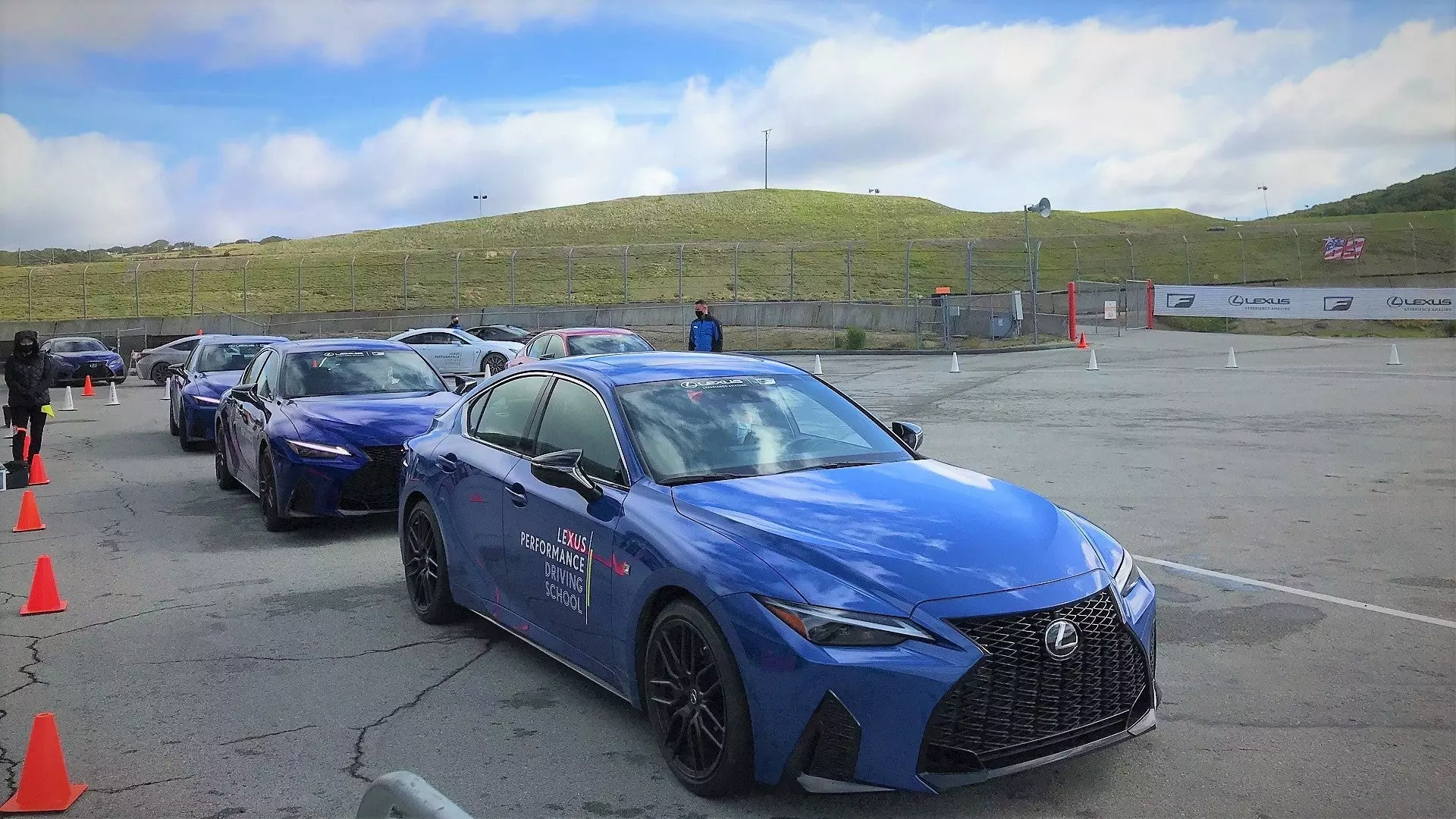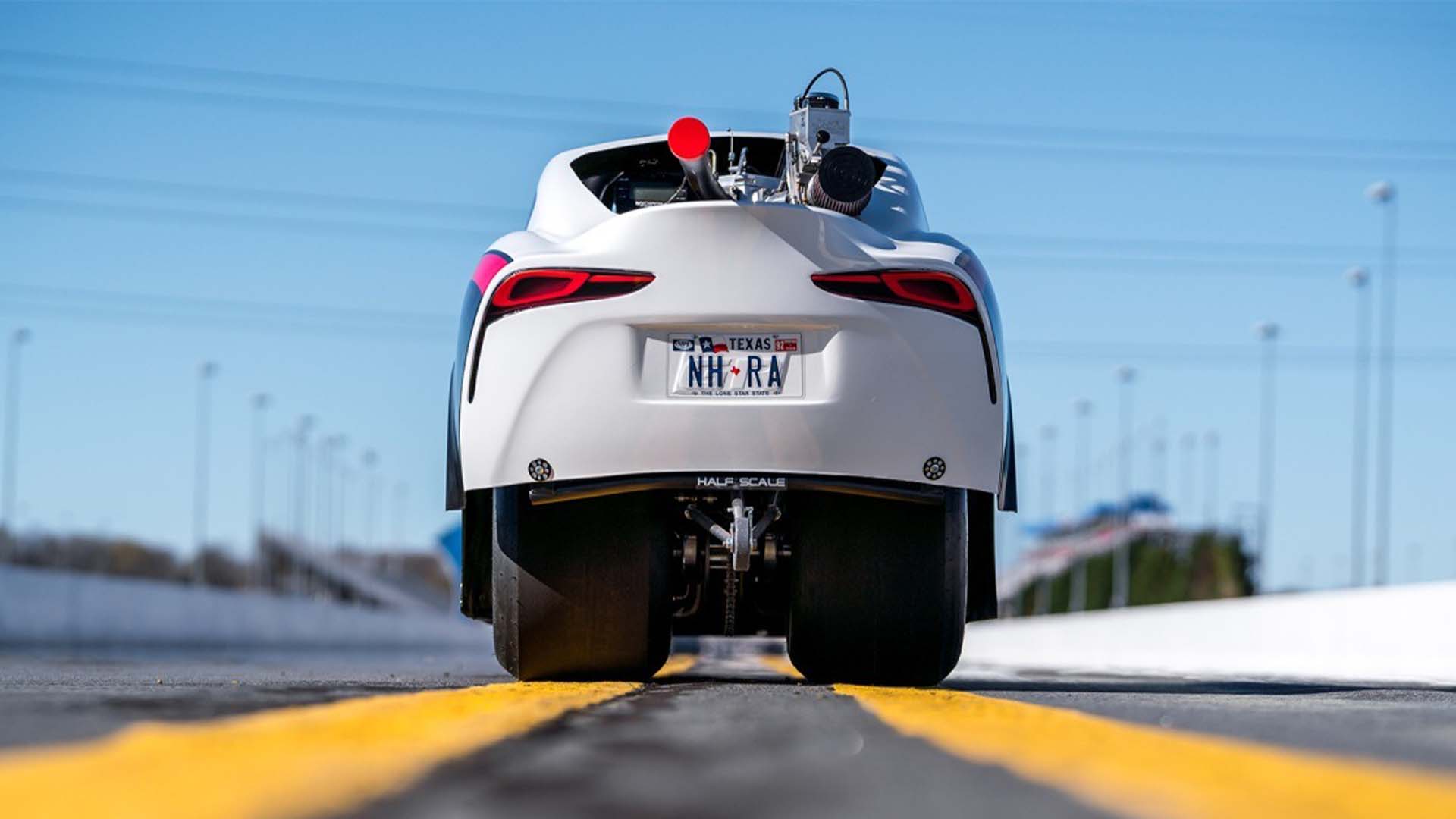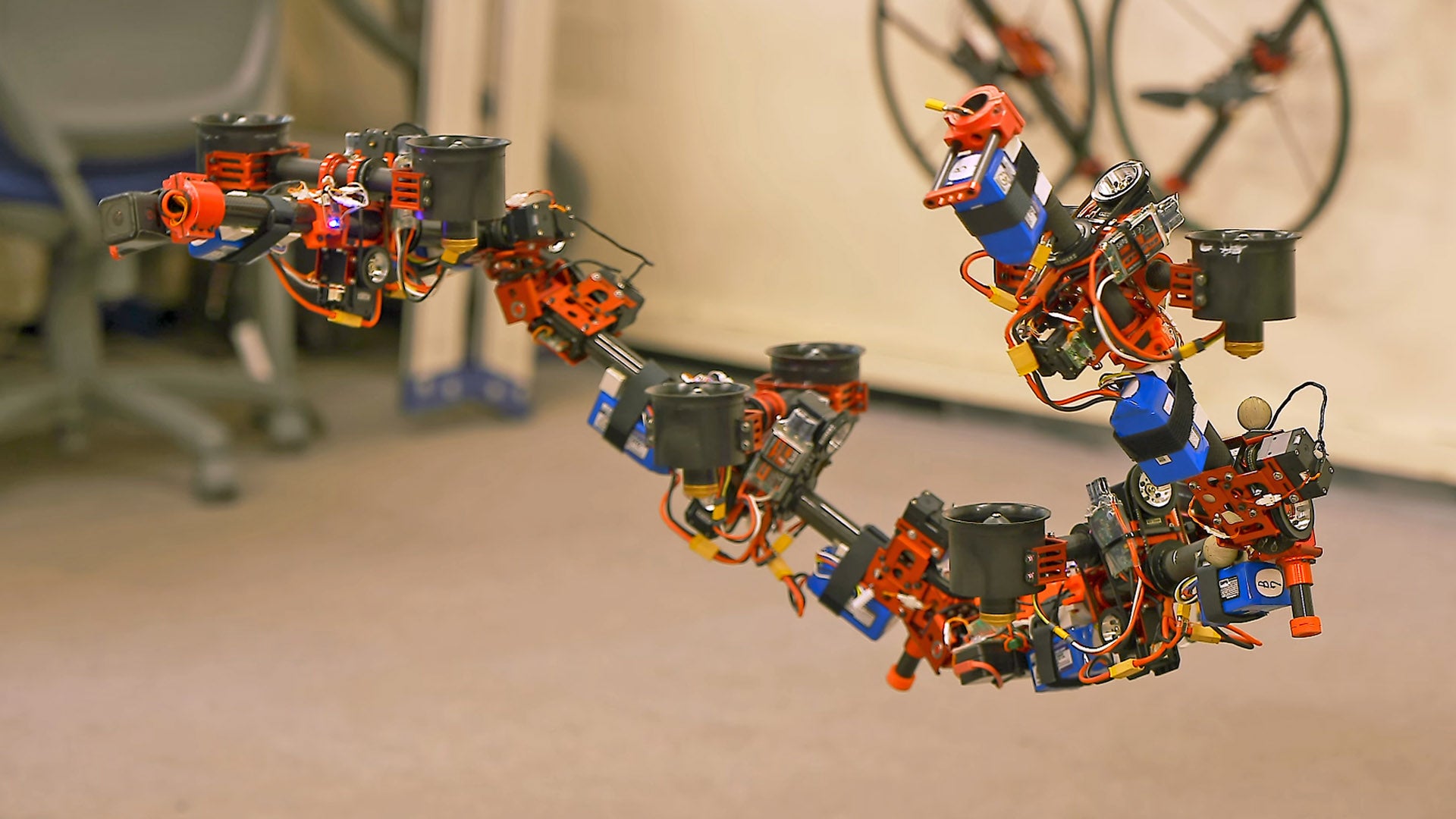Autocross is all about precision and smoothness. Maximum traction is the name of the game—any kind of slide, skid, or drift is counter to the driving techniques it demands. Well, they’re fun to do on course, but won’t help drop the lap time.
Disclaimers, disclosures: Lexus USA invited me to take part in the Lexus Performance Driving School at Weathertech Raceway Laguna Seca. The company covered the program cost, expenses, transportation up to Monterey and back, and lodging for the weekend. For more information on its high performance driving programming, check out the website.
It’s an incredibly tricky activity that demands precision. This makes autocross incredibly educational in learning the limits of grip, learning how to adjust to the car, and making every tiny inch through the course count. The steeds we got behind the wheel of were Lexus IS 350 F Sports, and they were very much up to the task.
The car in the picture above is from a previous event (in case you noticed that’s not an IS 350 F Sport) but you get the idea. If this driving school is something you might like to look into, this post will help give you an idea of what to expect.
The Setup
Before we got behind the wheel, our instructors gave us a peek at what the course layout would be. It was incredibly tight and low speed, with really only two sections to get up to a decent clip and have to brake hard at the end of. A short slalom was thrown in, as was a stop box that required a good grasp of braking. What I mean by good grasp is: brake hard enough to exit the course through the timing light as quickly as possible, but not end up past the end of the very short stop box.
The course was thoroughly outlined in cones so as to not confuse people, but also punish those who knocked them over. One of the main principles of autocross is penalizing drivers for knocking over cones. Being able to get the car right on the edge of the cone, but not knock it over or out of its outlined box, is a solid lesson in driving precision.
Each driver got three practice runs in the morning, and three counted runs in the afternoon. I really dug this, as we experienced a first impression of each activity, and then return to it later after we picked up some practice and techniques from others.
As we navigated through the course of cones in a run our instructors watched, and later offered up pointers once we returned to the grid after a run. The time between runs was very short, which was good for this type of autocross as it helped keep the course fresh in the mind, and completely avoided any hint of boredom (which happens at normal, non-performance-driving-school autocross events).
Storming Into the Course
After my first run or two, my instructors Adam Andretti (yep, of that family) and Manon gave me some praise for the times I put down and didn’t have any significant criticisms of my driving. It was a huge compliment to say the least. They gave me a few pointers to keep in mind, but otherwise, Adam essentially said if you set that kind of time already, I know you know where you can improve, keep up the good work. My best time of the day ended up being something like 32.586 seconds, which was 0.002 seconds slower than the fourth-fastest time of the day, and a little over 2 seconds off the fastest time of the day set by Scott Pruett.
Anyway, before I gloat any further and make you think I’ve got a bit of an ego about all of this, it’s all for an actual point I’d like to make.
There is always time to be cut. The slightest, most miniscule change kept me out of the Top Three (among the participants, sans Mr. Pruett). The slightest line change through the cones, the slightest change in throttle input or gear selection, the slightest change in braking, and more – it’s a testament to how useful autocross is.
A lot of small changes in these areas can add up to dropping significant time. Andretti advised the group that if our times were already pretty good, don’t go and out send it, trying to shave a ton of seconds. Instead, take the base line and refine certain portions: brake slightly later, carry a little more speed where possible, and so forth.
Going one further, we were fortunate to have a gaggle of identical IS 350 F Sports to run the course in. A sort of autocross spec class, in a sense. When you throw in setup changes such as alignment, tire pressure, damper rebound and compression, and more, everything gets incredibly more technical.
What We Learned
The important, key takeaways were focusing on smooth steering inputs, braking hard, being either on the gas or the brake at all times, looking ahead, quickly analyzing apexes, and doing whatever one can to shave-off hundredths. Precision is the name of the game in autocross; everything one can do to be as precise as possible will drop thousands, hundredths, tenths, and then full seconds.
These are microcosm lessons for bigger picture activities. We learned all of them in a quick, short course. Up next, we had the pleasure of utilizing them on a much bigger course: out on track at Laguna Seca.
The autocross portion of the Lexus Performance Driving School is featured between the 2:36-minute and 6:37-minute marks in the video below.









